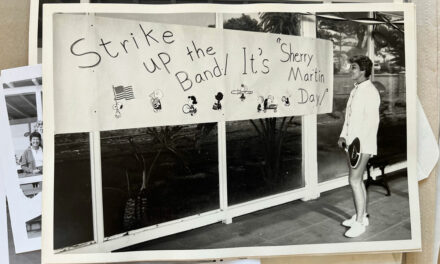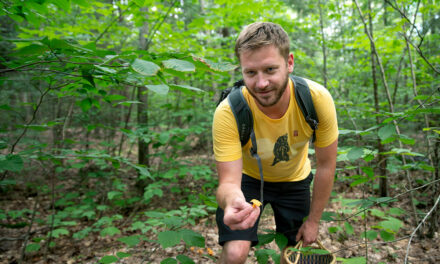
The Grape Sleuth
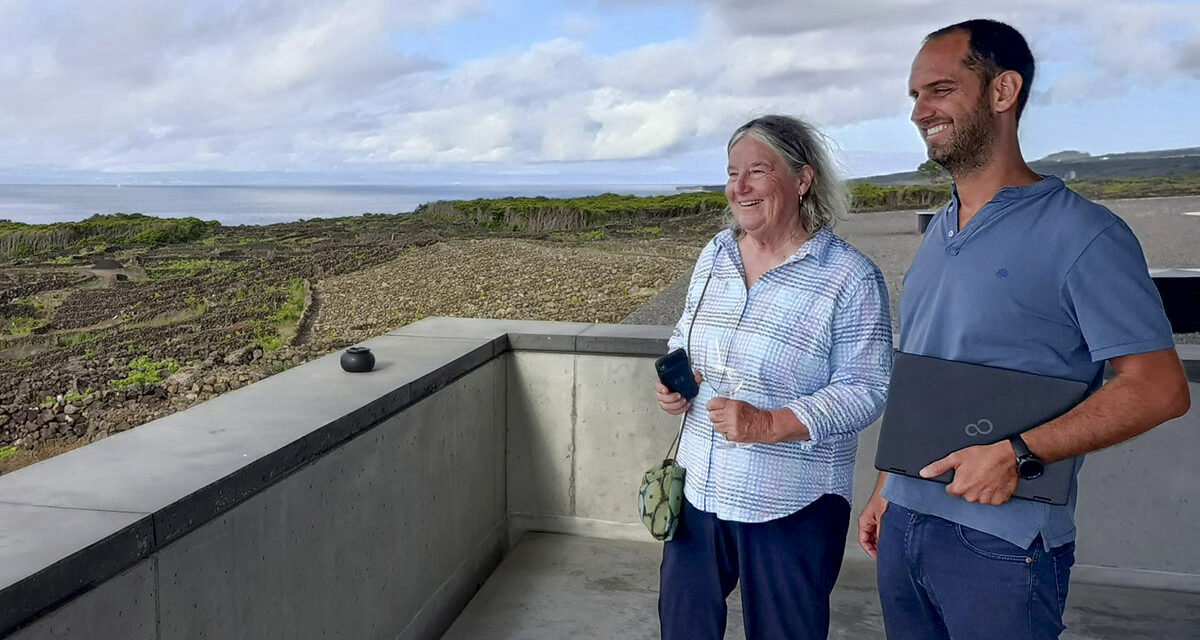
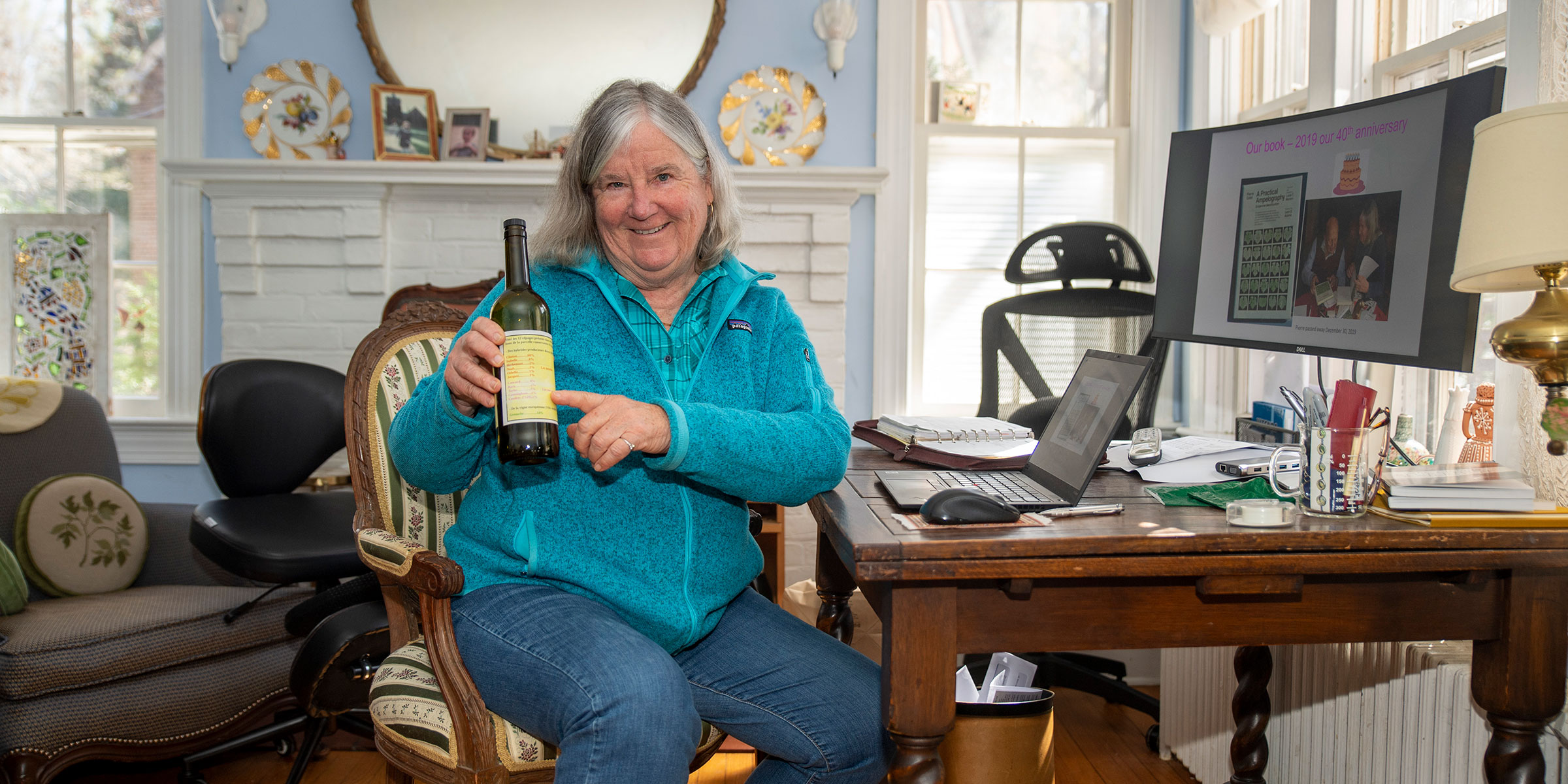
Lucie holding a bottle of wine from Europe that has one percent of the Cunningham grape in it—a grape connected to her family that is now extinct in the United States. But Lucie has brought it home.
The Grape Sleuth: Lucie Morton ’68
BY ANDREA DAWSON
Photos by Melissa Ulsaker Maas ’76 and Stéphan Balay
As the camera follows Lucie Morton from an old Parisian vineyard to a wild cluster of roadside grapes on an island off the coast of Portugal, to her verdant family farm and vineyard on the banks of the Potomac River, one detail among many stands out: She is ardently curious. Squinting through a magnifier to discern the delicate patterns on a grape leaf, she observes thoughtfully. Visiting with grape growers, vineyard owners, and even with a Frenchman seeking to identify a mysterious grape leaf prospering on his patio trellis, she listens intently. An internationally renowned viticulturist, she has more than earned the right to indulge in showmanship, but she is far too interested in dirtying her hands—that is to say, studying and solving the problems inherent in growing grapes.
“I am a student of grapes,” she explains. “I just love the grapevine in all its forms.”
The camera in question belongs to French documentary filmmaker Stéphan Balay. Having immersed herself in the complexities and curiosities of turning grapes into wine for the last 50 years, as a research collaborator, teacher, writer, sought-after lecturer, and international vineyard consultant, Lucie couldn’t help but be drawn into a story Stéphan was hoping she could shed light on.
COAXING COCA COLA FROM TABLE GRAPES
Dabbling in documentaries is but one story in Lucie’s quietly stellar career. At 72, she has many to share.
Like how, after graduating from the University of Pennsylvania with a degree in History, she returned to her family farm—Morland—at her father’s request, knowing next to nothing about wine, to “look into grapes,” as she remembers him saying. She never looked back. Or how, soon thereafter, she was accepted to the Cours Supérieur Internationale de Viticulture, a premier graduate program, spanning five countries, under the sponsorship of the world-renowned viticulture department at the agricultural university in Montpellier, France. At 26, she translated a seminal work by her Montpellier professor Pierre Galet, cementing her role at the time as one of the nation’s only ampelographers (a specialist in identifying grapes by their leaves). In the early 1990s, she predicted the demise of a popular Napa Valley rootstock to phylloxera, an insect that destroys vine roots. Later, she discovered a new rootstock disease altogether—black goo, as she named it.
Based in Charlottesville, Lucie is a problem solver not afraid to challenge convention. She has encouraged her U.S.-based clients, for example, to plant vines closer together, the more traditional European approach. She
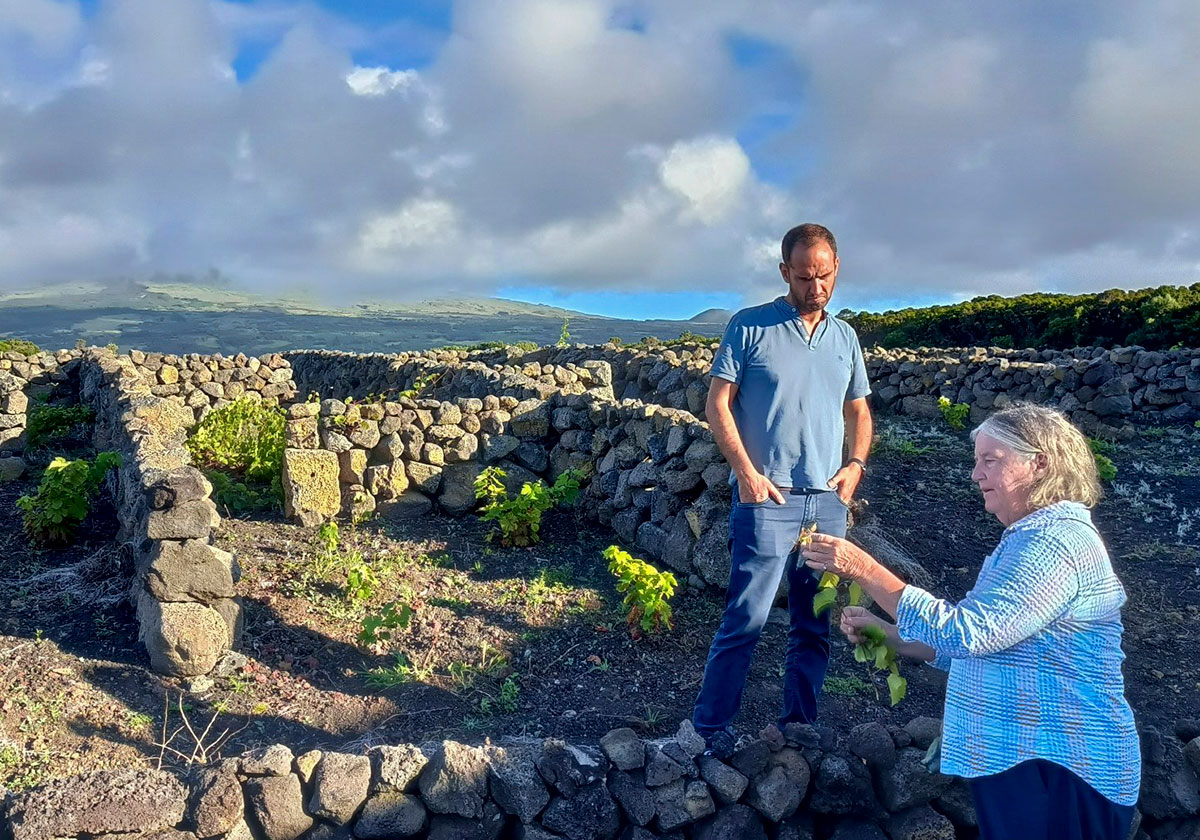
Lucie visiting with Filipe Rocha of the Azores Wine Company
on the island of Pico in the Azores archipelago.
“Lucie brought her expertise, knowledge, and enthusiasm to bear in developing our path forward over the last 24 years. Her belief in what we wanted to accomplish and her total commitment to our dream has never wavered. We would not be where we are today without Lucie’s contributions.”
~STEPHEN ROSE, ROSEMONT VINEYARDS & WINERY, LA CROSSE, VA.
views grape growing as equal parts science experiment and pure adventure. As a student in Europe, she gamely endured jokes about her plans to return home to Virginia and make wine from the popular juice and jelly grape, Concord. “Here is the Mademoiselle who will create coca cola from Vitis labrusca,” she recalls them teasing.
“For me, wine is all about, ‘Gosh, why does it taste this way? Where did the grapes grow? What are its roots like?’” she explains. “I am most interested in understanding the history, evolution, and diversity of grapes and the vines they grow on.”
Not surprisingly, in 2018, when Stéphan wanted to interview Lucie for a documentary that would uncover the story behind the French government’s ban, in 1934, of several American grapes, she was intrigued. That 2019 award-winning film—Vitis Prohibita—led to a second film collaboration with Stéphan, currently in the works, titled “Bon Voyage Vitis.” A precursor, of sorts, it follows Lucie across France, Madeira, the Azores, Missouri, New York, and her home state of Virginia as she explores how American grapes—many extinct and no longer grown in the United States—made the leap across the Atlantic to begin with.
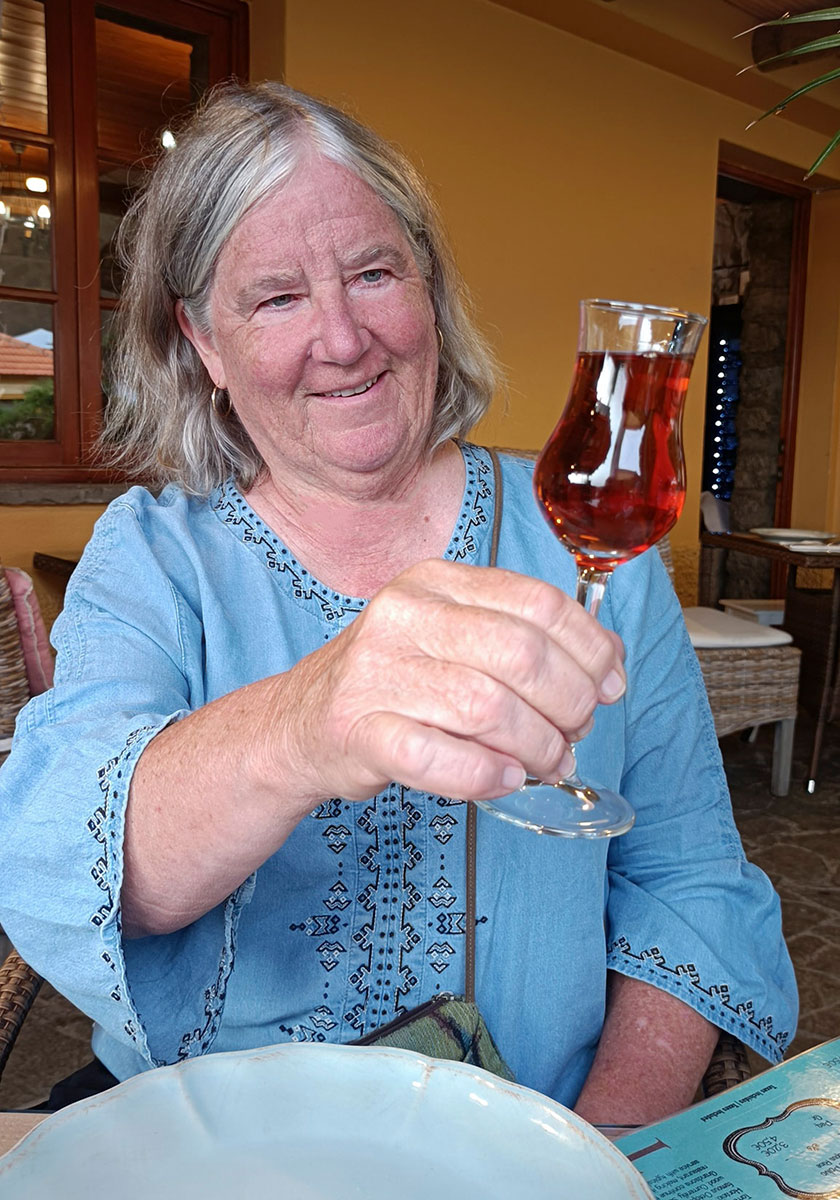
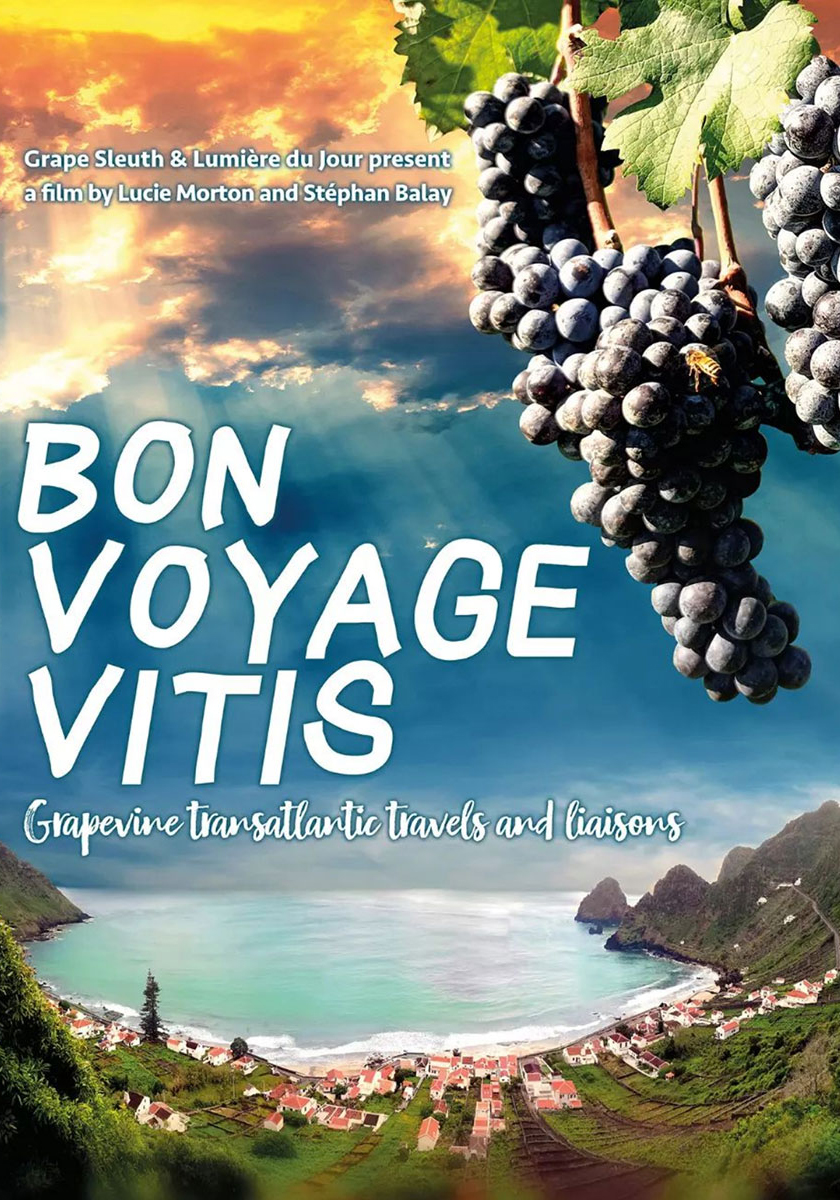
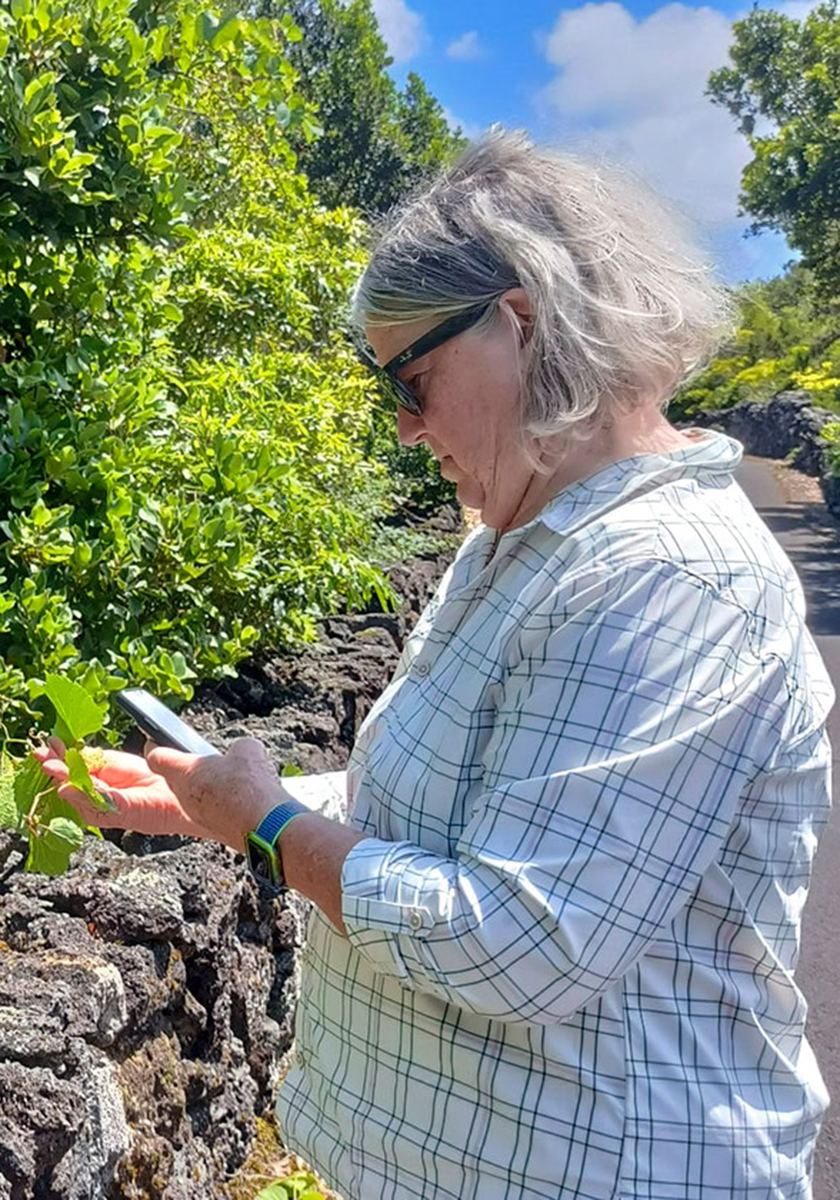
Like all good problem solvers and researchers, Lucie’s involvement in Bon Voyage Vitis has illuminated far more than the story she set out to investigate. She came to learn that her own family history is closely entwined with the outlawed American grapes. And one in particular caught her attention: a 19th century French American varietal native to Virginia but extinct in the United States named Cunningham.
In order to uncover its link to her family, she had to first understand its birth on American soil, its arrival and—later—repudiation in France, and why it vanished in the United States altogether. And what if, she mused, she could bring Cunningham back, returning a centuries old vine to its native soil?
THE FLOURISHING—AND VANISHING—CUNNINGHAM GRAPE
Ever the history lover, Lucie revels in sharing what she has learned. She begins with the Tidewater region of Virginia in the early 1600s, when the only grapes growing were from wild, native vines. As European colonists began to arrive, they brought with them their own native grapes—Vitis vinifera—and planted them in America. The grape ferrying continued for more than 200 years.
Maladapted to the American climate, these European vines slowly succumbed to a variety of fungal diseases and insects, like phylloxera. But not before they had a chance to pollinate. Wind sent the vinifera seeds into the forest to interbreed with the wild American vines, which were naturally disease resistant.
In 1812, Jacob Cunningham, who happened to be the neighbor of one of Lucie’s ancestors, noticed such a hybrid vine growing in his backyard in Farmville, Va., south of Richmond. Beside it sprouted another vine with noticeably larger, dark red grapes. Lucie’s ancestor took a cutting to grow on his farm, calling it Cunningham.
Not only did European vines travel to America; the disease-resistant American hybrids made their way back to Europe, and to islands along trade routes in between. “They hopped a boat, jumped off in the Azores, and were taken on to Europe,” Lucie explains. Unfortunately, in the mid-1850s, undetected phylloxera hopped a ride, too. While the American vines were impervious to its rampage, the European vineyards were devastated. Ironically, as many wine historians are quoted as saying, in the problem was the solution: Winemakers in Europe began grafting their vines onto the disease-proof American rootstocks. Crossbreeding also took place. The resulting healthy vines took hold.
St. Agnes Beginnings
My St. Agnes experience was a big factor in my intellectual development. Back then, my procrastination was legendary and I was an academic underachiever. A few key inspirational teachers and an all-girls situation helped keep me focused, intellectually stimulated, and able to take leadership positions in sports and student government perhaps more than a co-ed environment would have.
I struggled with grammar, but I remember my Advanced French class took me into the world of French art and culture. When I got to the viticulture program in Montpellier and fell in love with grape vines, my French classes at SAS are what really provided an invaluable foundation.
My time at St. Agnes also gave me the confidence to go into an environment with more men. The University of Pennsylvania was 20% women at the time, Oxford [where she subsequently explored 19th century Anglicanism] had almost no girls, and then I went on to Montepllier. It wasn’t deliberate, but I welcomed going into a male environment.
Thanks to Cunningham and other American hybrid grapes, a centuries-old European winemaking tradition, which relied solely on fine vinifera grapes, had been rescued. But dissension was brewing, especially in France.
“American vines were considered peasant vines. The wine was cheaper to produce because the naturally disease-resistant hybrid vines were easier to grow,” explains Lucie. “They ran afoul of the establishment, whose main concern was saving the fine wine sector.” Overproduction was also a problem. In 1934, the French enacted a formal ban, ordering six American hybrids uprooted. Although Cunningham was not officially on the ban list, it became illegal to sell wine made from it and other American-born grapes.
Not everyone listened.
“What Lucie is trying to do is so far out in front of everyone else. In her mind, not everything has to be chardonnay, merlot, or cabernet. She is always pushing the envelope for the future, always seeking the truth.”
~JON WEHNER, CHATHAM VINEYARDS & WINERY, MACHIPONGO, VA.
Local rebel farmers across France, nonplussed by the order, continued to cultivate them for personal consumption. In the Cévennes Mountains of central France, for example, they refused to rip out the vines they had so painstakingly planted and nurtured over decades. “These were true grapes of resistance,” Lucie says.
Despite their outlaw status, the defiant grapes continued to thrive in Europe. They were short-lived in the United States, however. By 1900, winegrowing in Virginia was moribund, and Cunningham disappeared. “There was no winegrowing culture to sustain it,” Lucie says. “That was partly due to Prohibition and partly due to the introduction of tobacco farming. The minute tobacco came along, farmers were drinking whiskey and cider, not wine.”
HOMECOMING
In 2006, France relented and lifted the ban. The American hybrid grapevines no longer have to be uprooted, but it remains illegal for the wine produced from them to be sold commercially. While rare across much of Europe, Cunningham continues to grow, along with other American grapes, like the popular Isabella. Back in Virginia, the matter of Cunningham’s disappearance lingered in Lucie’s mind.
In 2018, she and her friend, the grape breeder Cliff Ambers, were enjoying a prized bottle of 2017 Coteaux d’Aujac “Cuvée Cépages Oubliés,” sent to her by Stéphan (members of a “forgotten grape” association are gifted six bottles a year). Pointing to the 1% Cunningham on the label, he encouraged her to track down the vine and bring the lost variety back to Virginia.
A year later, she traveled to France, secured a cutting of the Cunningham rootstock, obtained the necessary USDA paperwork, and returned with it to the United States. That cutting is currently living in a greenhouse at Cornell University, undergoing strict quarantine protocols. Once released—within the next few years, she estimates—one of only two grape varieties native to Virginia will be released, ready to grow and propagate once again.
“I’m getting commercial nurseries lined up so once we have vines they can go to Missouri and New York, which have USDA germplasm repositories, and to the Foundation Plant Services at the University of California, Davis. I’m laying the groundwork,” she says with excitement.
First dibs also go to her nephew, John Morton, who has taken over the nearly century-old family farm, Morland Farm & Vineyards. With Lucie’s help, in 2020 he planted an acre of Chardonel and Chambourcin, French-American hybrids, and restored Morland’s 1930s-era native vines—Concord, Caco, and Niagara. Adding Cunningham, which she says will be suitable to many styles of wine, would be a triumphant conclusion to her transcontinental quest.
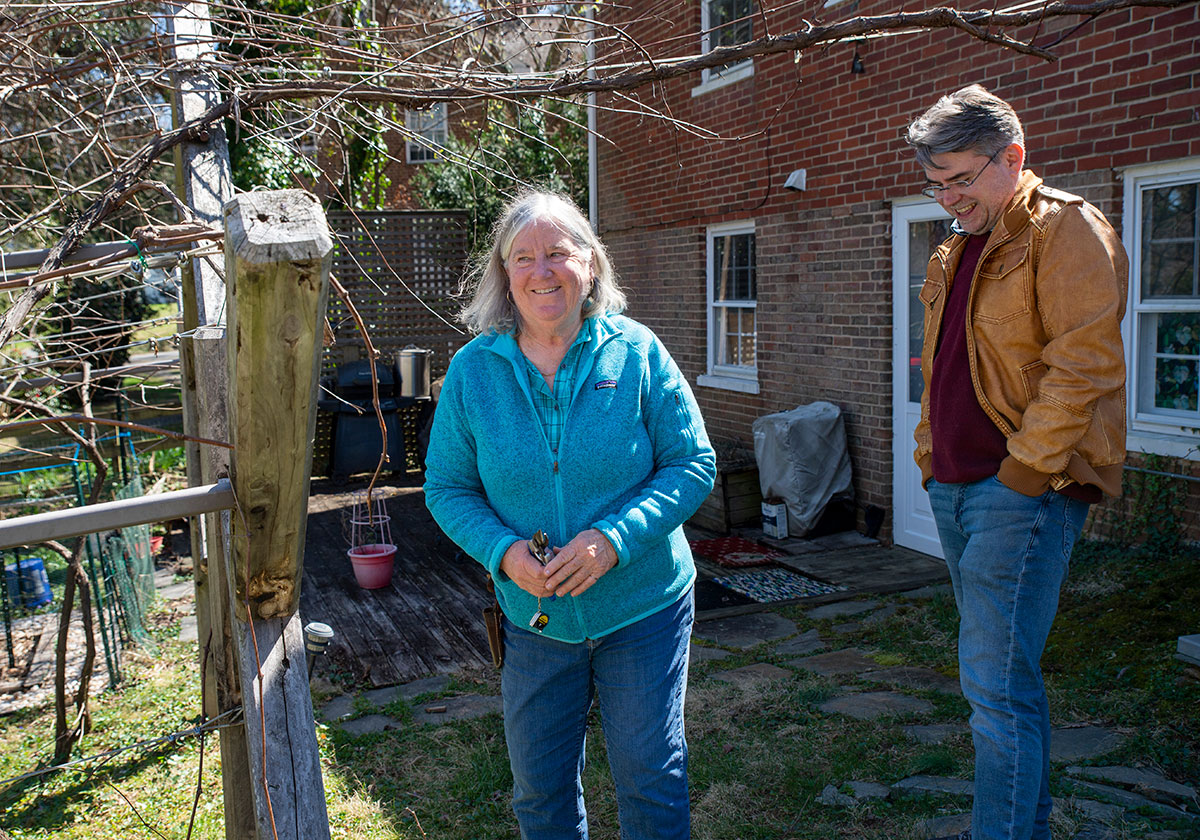
Lucie and Stéphan Balay in Charlottesville in
March to continue filming “Bon Voyage Vitis.”
“I don’t want to be a flying viticulturist, a personnage traveling the world and charging a lot of money. I love helping people save the family farm. I want to grow with a vineyard, work with its people, and be part of its changes.”
~LUCIE MORTON ’68
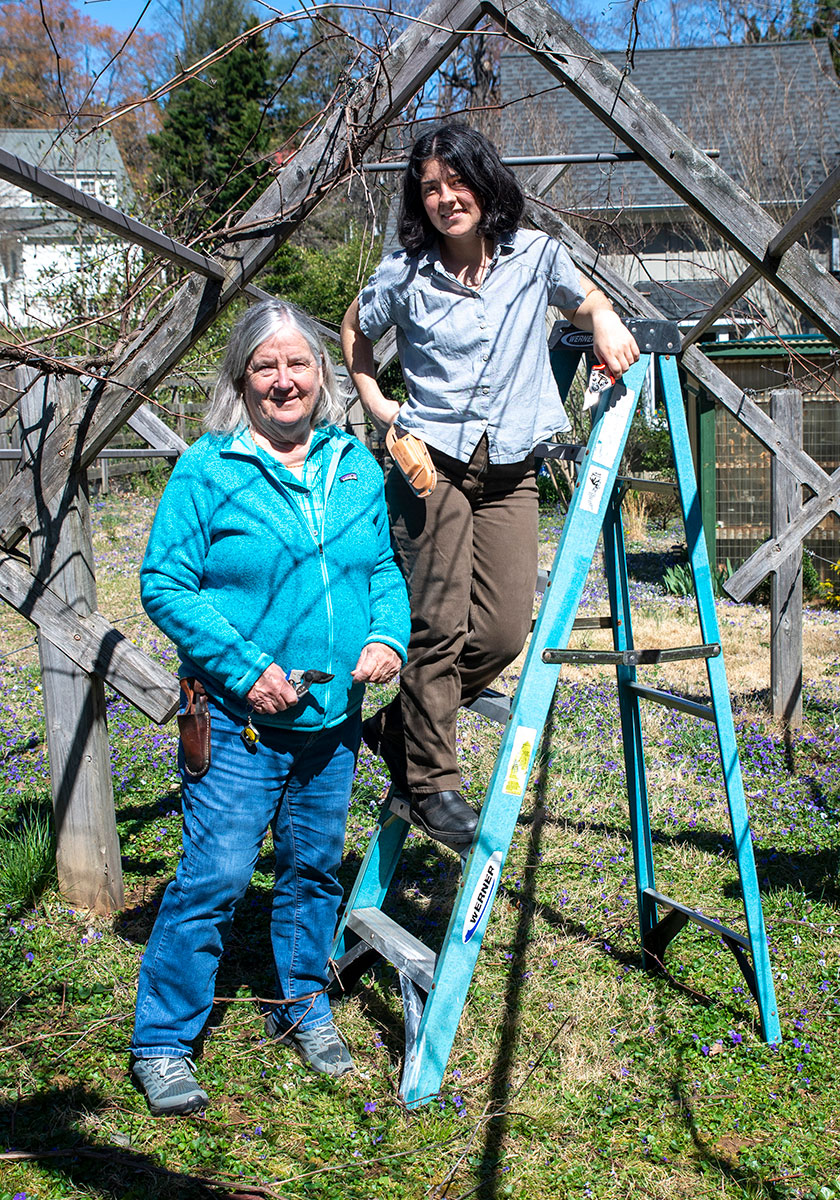
Lucie and her assistant, Allegra Barnes, pruning
vines at Lucie’s home in Charlottesville.
THE NEXT CHAPTER
While Lucie awaits the Cunningham’s release from quarantine, she has plenty to keep her busy. She is currently wrapping up her third book, Grape Rootstocks: From Earth to Wine. In collaboration with Stéphan, she is also hard at work securing funding for the completion of Bon Voyage Vitis. In the coming year, she plans to visit Brazil, which has served as a refuge for historic American hybrid grapes, as she threads together the final pieces of the story. Of course, her ongoing consulting work with small family estate wineries as well as larger organizations—and the ever-evolving changes and challenges of growing distinctive wine grapes—continue to energize her. Among her clients is fellow St. Agnes alumna Jane Kincheloe Wiles ’73 and her son, Kirk, owners of Paradise Springs Winery. With Lucie’s oversight, they are developing their second estate vineyard and winery site in Virginia.
Mentoring young growers—and the new wines they will undoubtedly produce—energizes Lucie, too. In them, she experiences a back-to-the-future sensation, recalling the early years she spent toiling away at Morland, patiently experimenting with different varietals, enticing vines from finicky soil. “To turn this wonderful historic grape loose on a new generation of winemakers trained in oenology, that’s exciting for me,” she says. “My focus is to bring Cunningham home, liberate it, sit back, and watch. And look forward to tasting those first bottles of homegrown wine.”

